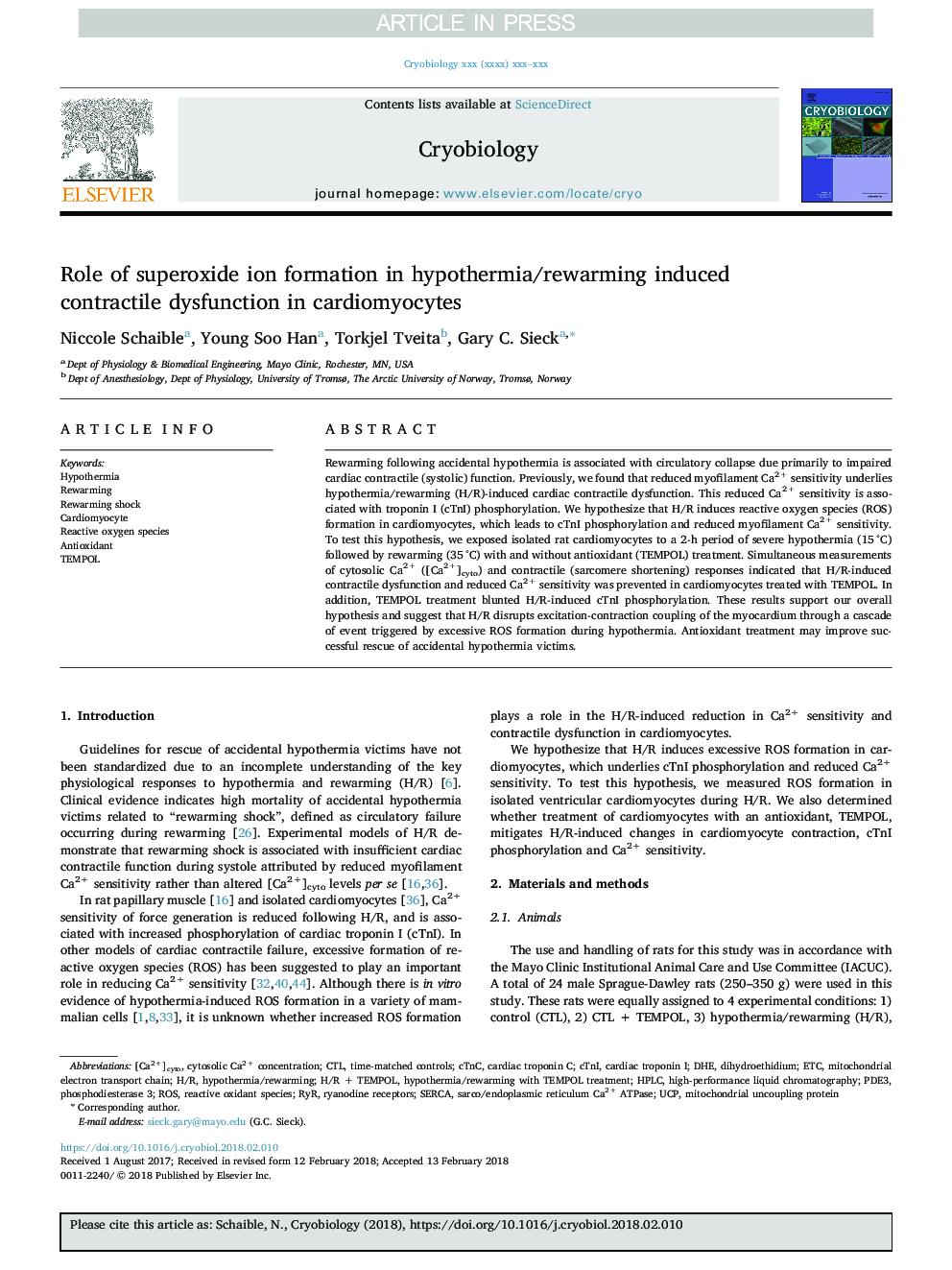| Article ID | Journal | Published Year | Pages | File Type |
|---|---|---|---|---|
| 8464126 | Cryobiology | 2018 | 8 Pages |
Abstract
Rewarming following accidental hypothermia is associated with circulatory collapse due primarily to impaired cardiac contractile (systolic) function. Previously, we found that reduced myofilament Ca2+ sensitivity underlies hypothermia/rewarming (H/R)-induced cardiac contractile dysfunction. This reduced Ca2+ sensitivity is associated with troponin I (cTnI) phosphorylation. We hypothesize that H/R induces reactive oxygen species (ROS) formation in cardiomyocytes, which leads to cTnI phosphorylation and reduced myofilament Ca2+ sensitivity. To test this hypothesis, we exposed isolated rat cardiomyocytes to a 2-h period of severe hypothermia (15â¯Â°C) followed by rewarming (35â¯Â°C) with and without antioxidant (TEMPOL) treatment. Simultaneous measurements of cytosolic Ca2+ ([Ca2+]cyto) and contractile (sarcomere shortening) responses indicated that H/R-induced contractile dysfunction and reduced Ca2+ sensitivity was prevented in cardiomyocytes treated with TEMPOL. In addition, TEMPOL treatment blunted H/R-induced cTnI phosphorylation. These results support our overall hypothesis and suggest that H/R disrupts excitation-contraction coupling of the myocardium through a cascade of event triggered by excessive ROS formation during hypothermia. Antioxidant treatment may improve successful rescue of accidental hypothermia victims.
Keywords
Mitochondrial uncoupling proteinPDE3CTLsarco/endoplasmic reticulum Ca2+ ATPaseUCPcTnIRyRH/RROSAntioxidantcTnCcardiac troponin CRewarmingdihydroethidiummitochondrial electron transport chainTempolCytosolic Ca2+ concentrationPhosphodiesterase 3SERCAcardiac troponin ICardiomyocyteHypothermiaDHEETchigh-performance liquid chromatographyHPLCReactive oxidant speciesReactive oxygen speciesRyanodine receptors
Related Topics
Life Sciences
Agricultural and Biological Sciences
Agricultural and Biological Sciences (General)
Authors
Niccole Schaible, Young Soo Han, Torkjel Tveita, Gary C. Sieck,
